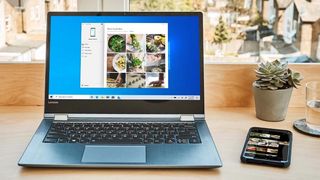Unveiling the Seamless Integration: How Windows 10 Can Run Android Apps on Your PC

Introduction:
In an era where the boundaries between different operating systems are becoming increasingly blurred, Microsoft has taken a giant leap forward by allowing Windows 10 users to run Android apps directly on their PCs. This integration not only broadens the horizons of cross-platform compatibility but also offers a unique and seamless experience for users who want the best of both worlds. In this extensive article, we will delve into the intricacies of this groundbreaking feature, providing a step-by-step guide on how Windows 10 can now run Android apps, creating a harmonious ecosystem for users.
Chapter 1: The Evolution of Cross-Platform Compatibility
To truly appreciate the significance of this development, we need to explore the historical context of cross-platform compatibility. The ever-expanding digital landscape demands cohesion between different operating systems, and Microsoft’s decision to bridge the gap between Windows 10 and Android is a testament to the evolving nature of technology. We’ll explore how this move aligns with the industry’s trends and the growing demand for seamless integration.
Chapter 2: Understanding the Technology Behind the Integration
The magic behind running Android apps on Windows 10 lies in Microsoft’s partnership with the Amazon Appstore. This chapter will unravel the technical intricacies of this collaboration, detailing how the Windows Subsystem for Android (WSA) facilitates the smooth execution of Android applications on the Windows platform. From runtime environments to compatibility layers, we’ll break down the key components that make this integration possible.
Chapter 3: Enabling the Windows Subsystem for Android
Before diving into the world of Android apps on Windows 10, users need to enable the Windows Subsystem for Android. This chapter will guide readers through the step-by-step process of activating WSA on their systems. We’ll explore the settings, configurations, and prerequisites to ensure a seamless setup, allowing users to make the most of this innovative feature.
Chapter 4: Accessing the Amazon Appstore on Windows 10
The Amazon Appstore serves as the gateway for Windows 10 users to access and run Android apps. This chapter will detail how to download and install the Amazon Appstore on Windows 10, exploring the user interface and functionalities. Additionally, we’ll provide tips on navigating the Appstore, finding and installing Android applications, and managing updates seamlessly.
Chapter 5: Running Android Apps on Windows 10
With the groundwork laid, it’s time to experience the synergy between Windows 10 and Android. This chapter will walk users through the process of launching and running Android apps on their Windows PCs. From understanding the user interface to optimizing performance settings, we’ll cover everything users need to know to make the most of this integration.
Chapter 6: Maximizing Productivity with Android Apps on Windows
The integration of Android apps into the Windows environment opens up a myriad of possibilities for increased productivity. This chapter will explore how users can leverage popular Android applications for work, communication, entertainment, and creativity on their Windows 10 PCs. We’ll highlight specific apps and use cases that showcase the versatility of this integration.
Chapter 7: Addressing Compatibility and Troubleshooting
As with any technological advancement, there may be compatibility issues and occasional glitches. This chapter will provide insights into potential challenges users might face and offer practical solutions for troubleshooting. From app-specific problems to system-wide issues, readers will find valuable tips to ensure a smooth and error-free experience.
Chapter 8: The Future of Cross-Platform Integration
The integration of Android apps into Windows 10 marks a significant milestone, but what does the future hold? This chapter will explore the potential evolution of this collaboration, examining possibilities for expanded app compatibility, enhanced features, and broader partnerships between Microsoft and other tech giants. We’ll speculate on the trajectory of cross-platform integration and its implications for the user experience.
Conclusion:
Windows 10’s capability to run Android apps represents a paradigm shift in the realm of cross-platform compatibility. Microsoft’s strategic collaboration with the Amazon Appstore has opened up new avenues for users, offering a seamless and integrated experience that transcends the boundaries of traditional operating systems. As technology continues to evolve, this feature stands as a testament to the industry’s commitment to providing users with a unified and versatile computing experience. By following the steps outlined in this comprehensive guide, users can unlock the full potential of running Android apps on their Windows 10 PCs, embracing a future where the boundaries between platforms become increasingly obsolete.






